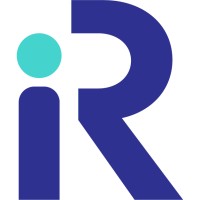

 Laneisha Roberts, Co-Founder and CEO of ReviewTailor.
Laneisha Roberts, Co-Founder and CEO of ReviewTailor.
She has over 15 years of leadership experience in government and healthcare industries and has proven track record in leading and developing exceptional talent.
Previous founder of social app featured in AfroTech (BlessApp).
Connect with Laneisha on LinkedIn.
 Kristin Bell, Co-Founder and COO.
Kristin Bell, Co-Founder and COO.
She has experience with HR tech startups and fortune 500 companies across healthcare financial services, and manufacturing industries.
2019 SHRM Central Arkansas Rising Star Award and Advisory Board Member for VC-backed DEI/HR tech startup.
Connect with Kristin on LinkedIn.
What You’ll Learn In This Episode
- Founding story
- How bias manifests in the performance reviews/importance of equity
- Who ReviewTailor targets
This transcript is machine transcribed by Sonix
TRANSCRIPT
Intro: [00:00:04] Broadcasting live from the Business RadioX studios in Atlanta, Georgia. It’s time for Atlanta Business Radio. Brought to you by On pay. Atlanta’s new standard in payroll. Now, here’s your host.
Lee Kantor: [00:00:25] Lee Kantor here, another episode of Atlanta Business Radio, and this is going to be a good one. But before we get started, it’s important to recognize our sponsor, Onpay. Without them, we couldn’t be sharing these important stories. Today on the land and business radio, we have Kristin Bell and Laneisha Roberts with Review Taylor. Welcome.
Laneisha Roberts: [00:00:45] Awesome. Thank you.
Lee Kantor: [00:00:46] Lee, I am so excited to learn what you’re up to. Tell us a little bit about review Taylor. How you serving folks.
Laneisha Roberts: [00:00:53] Yeah, yeah. So Review Taylor is an HR tech platform right now focused on performance management, performance management reviews. And we do our very best to enable employees and managers to have a more equitable and time optimized experience when it comes to performance reviews.
Lee Kantor: [00:01:13] So what was the genesis of the idea? How did this even come about?
Kristin Bell: [00:01:18] Yeah, so very funny story. Laneisha and I met in a Facebook group and kept in contact, and we started just to share our passions around having equitable outcomes in the workplace for people having very similar pain points. Lanisha from more of a manager people leader perspective, myself from an HR practitioner perspective, and decided that our current tools that we use around performance management were not solving for the root cause of the problem, which is saving time and equity within the process. And so we said, why not us? Let’s solve this problem together.
Lee Kantor: [00:01:55] So now walk us through what it’s like for a typical performance review happening right now in corporate America. Is it? Is it just super biased and subjective, or is it really getting to the heart of who are my real, true, you know, high performers and who are not?
Kristin Bell: [00:02:15] My question. So a typical performance review today, say is a very clunky and in some organizations manual process. If you were to ask 100 managers what was their most painful time of the year, I’m pretty sure at least 90% of those would say performance review time frame. The reason for that is because oftentimes managers have to keep track of employee performance highlights. If they are, let’s just start there. If they are keeping track of it in a potentially a spreadsheet or some disconnected data source. And so when it’s time for that annual or semiannual or whatever, the cadence is a review cycle, they’re having to reference various different sources to piece together one review for a single employee. And assuming that manager has multiple employees, this could be a very tedious process, and through that process, it can often lead to biases in the overall performance review process. You know, some biases that creep into the process could be halo or recency bias, where you know what, I can’t quite remember what you did 12 months ago, but I know there’s one thing you did last week. And so let me just highlight that and use that to support your overall performance for the year.
Lee Kantor: [00:03:38] Now, I have talked with several people in large organizations and they run into this. They too, as an individual, they dread this performance review time because they never can remember all the stuff. And then a lot of times they don’t. They dismiss some of the things that might be really important. And then, like you said, the recency effect where they remember the latest thing. So I was coaching them to just put a folder in your, you know, in your desk and just start just throwing stuff in there as you’re accomplishing things. Just so you remember the things that happened 12 months ago, because you’re never going to remember, you know, by going through your calendar or however you’re doing it now. It just seems so inefficient. But if you have somebody wrote a note complimenting you, or you have some success, throw it in this folder so you have at least data to support your, you know, whatever you’re trying to accomplish from a promotion or raise.
Laneisha Roberts: [00:04:39] Yeah. And that’s a really good point, Lee. And something that you, you point out there is that employees will still have to make the effort of creating whatever that performance highlight was or going into the system to update their goals. And that could be through whatever system that they’re currently using today, or if it’s just being kept on a spreadsheet or via email. But the one thing that I think really also sets Revue Taylor apart in this space is that for managers and employees, that information can now be tracked in one system, right? A centralized location. And at the time of the performance review, our system allows for all of those nodes and those performance highlights that have been gathered and the goal updates to now generate a review for you summarizing those accomplishments with the click of a button somewhere between 6 to 8 seconds. And so that’s also saving some time. That’s also supporting removing some of that recency bias or even some of the affinity bias. If there is, you know, just not the recollection of the data that’s been there and the accomplishments from throughout the year. So I think it’s a really important piece that that is missing today from a lot of the systems and the processes that we use. So even if employees are currently using a system where it doesn’t have that ability to pull everything in, they can still use what we have as our single user solution, where they can create their own review and then add that into their current system.
Lee Kantor: [00:06:08] Does this prevent some of some people are just better at these reviews and they’re better at spinning, you know, something that might be kind of minor into something major just because that’s their personality, they’re good at it, and other people are not good at it, where they kind of downplay the the contributions they make. Is does this kind of help each of that out so that the manager has a truer picture of what’s really happening?
Laneisha Roberts: [00:06:34] Oh yeah. Absolutely. And again, you know, the training that companies will give their employees and their managers about how to write a performance review will translate differently depending on how that information was delivered, how the employee and or the manager was able to adopt it. And so I think what I does in this case generative AI does in this case is it levels the playing field, right. It creates a space of access for people to be able to use something or system or technology that can help them to write and really thoroughly explain what they’ve accomplished throughout the year.
Lee Kantor: [00:07:15] Now, do you have any data to support the hypothesis that it’s inefficient, that there’s biases that are affecting performance, that the people with the highest performance aren’t necessarily being rewarded in the same manner as they should be? And maybe the there’s people in the lower end that aren’t being, you know, accounted for in that manner as well as their kind of data to support this is a better mousetrap.
Laneisha Roberts: [00:07:44] I’ll tell you what data we do have. Lee. We did a survey back in the beginning of the spring where we talked to a number of different employees, managers as well as HR administrators who would be overseeing the performance review process. And I want to say over 50% of those survey respondents really felt that there was a huge opportunity to create a more equitable practice within the performance review. The only other data that I would encourage organizations and people to look at is take a look at the demographic makeup of the organization. If you are able to see that a certain population of people are not advancing in the organization at similar rates, then there is an opportunity to really take a step back and assess and determine, are we evaluating talent in a way that is fair and that is equitable? Do we have a clear criteria that has been identified for singing? What is top talent. And those are usually conversations that don’t happen very often. And so many organizations are still operating from practices that are and could be outdated. So that is the data that I would encourage people to reflect on is what is your current organization look like and what people processes have been reviewed to to change that if it’s not a favorable outcome?
Lee Kantor: [00:09:10] Now, is this for the leadership of the organization? Is this something that is solving a problem that is a pain point for them right now, or is this kind of a nice to have? This would be great if we were able to do this. But, you know, by not knowing exactly if our performance reviews are optimal or optimized, you know, across the board, it’s kind of it’s kind of a wash, like, you know, you win some, you lose some. But is this something that they’re really missing out on opportunities? Are they really missing out on talent because they’re not rewarding the right people effectively? Like is this something that is a true pain point, or is it something that’s a kind of a nice to have?
Kristin Bell: [00:09:59] I’m sure. So I will say that review Taylor is solving for two pain points. One of those being the time aspect. And there is data numerous data available. One of those metrics is that on average, a manager spends 210 hours a year just on the performance management process. So we know that this is a pain point, not just experience in isolation and individual locations or organizations, but it’s something that’s shared across the board. So with our solution, part of our our aim is to truly address that time piece. And so because it’s such a tedious process, there are folks who are often, you know, truly left out of that process from a developmental standpoint, because if the review is just done to check a box, for example, because it’s a tedious process, then we miss valuable opportunities to truly nurture and develop and hold these crucial conversations with the employees during these, not just in the annual review stages, but also various points throughout the year.
Laneisha Roberts: [00:11:09] And I’ll also add on to what Lanisha shared there, something that comes to mind for me as a true HR executive here is cost saving mechanisms. And so when you think about traditional HR, you think about a non revenue generating function. However it is your people function and it is the function that drives the employees experience throughout their time at the organization and what their experience can be like post leaving the organization and cost saving mechanisms really contribute a lot to the bottom line, such as being able to retain employees, being able to develop the talent that you need internally, creating a culture of engagement that translate and that translates into productivity, which can then translate into, you know, how you’re able to acquire new business or market expansion or innovation for different ideas, ideas that can drive revenue. So being able to get employees the information that they need to continue their development, you know, largely benefits the organization. And we want to find a way to make it easier for the employees and the manager. I think that’s a definite area of concern and should be a priority to any organization that wants to be successful and go the distance.
Lee Kantor: [00:12:30] Yeah, I agree, I think that if you talk about it in terms of culture, that you’re not leaving anybody behind, that everybody is going to get kind of a fair shake at this. Then you have an opportunity to really, you know, kind of visibly practice what you preach. When you say people are your most important asset here is to say, I’m treating everybody equally here and everybody’s going to to kind of get the same treatment. It’s not going to be as affected by bias as these other more subjective ways of doing performance reviews. And I think that that could help in retention and in also acquiring the talent that you need to grow and to demonstrate that you actually do care about the people.
Laneisha Roberts: [00:13:16] Oh, yeah. Lee, it sounds like you’re already a believer. And we need to get you access to review Taylor.
Lee Kantor: [00:13:21] Well, what? Like, how does it work for, like, say, I’m in? What do I have to do in order to make this tool work for me?
Laneisha Roberts: [00:13:28] Yeah. So there’s two approaches here. One is a for a for a single user solution. So Lee, if if Business Radio or Radio X is using a system that is not currently review Taylor, and maybe you still want to make the process easier for yourself as an individual. We offer a freemium model where you can still download the solution and create an account, and you can keep your performance highlights there and you can still generate your review. You’ll just need to either export it as a PDF or download it, or copy and paste it. And then the second piece of that is, if you are a small business or a business that has less than 500 employees, then you have the option of exploring one of our packages and and being able to pick the right plan for you and your organization, and having that customized hands on support to getting this implemented and in access for all of your employees. So you can do that just by going to booking a demo on our website review taylor.com and one of our team leaders will reach out to you to to provide that support.
Lee Kantor: [00:14:40] So your target you’re really I mean, I would imagine your main goal is to get in front of HR people in companies under 500 employees, like the more of those you could reach, the better.
Laneisha Roberts: [00:14:52] Yeah, yeah, that would be for our business solution. And again, we do have another option available for those who may be at organizations where their H.R team is not budging. Or they maybe they’ve just signed a contract that they’re locked into as an individual contributor or an employee. You can still use that. And even as a manager, you can still use the single user version and create a review for your employees. And again, so we have two different audiences there. We have just the individual contributor, the manager for the single user, and then for the business solution. We want those small organizations that really care about their people and who care about getting it right early on in their journey.
Lee Kantor: [00:15:34] Well, thank you both so much for sharing your story today. You’re doing important work and we appreciate you.
Laneisha Roberts: [00:15:40] Awesome. Thank you so much. We are very passionate about this space and hoping that we’re creating the impact that will outlast us both.
Lee Kantor: [00:15:48] Yep. And that website one more time is review Taylor t I l o r.com. Thank you both.
Laneisha Roberts: [00:15:56] Awesome. Thank you Lee.
Lee Kantor: [00:15:57] All right. This is Lee Kantor. We’ll see you all next time on Atlanta Business Radio.
About Our Sponsor
OnPay’s payroll services and HR software give you more time to focus on what’s most important. Rated “Excellent” by PC Magazine, we make it easy to pay employees fast, we automate all payroll taxes, and we even keep all your HR and benefits organized and compliant.
payroll services and HR software give you more time to focus on what’s most important. Rated “Excellent” by PC Magazine, we make it easy to pay employees fast, we automate all payroll taxes, and we even keep all your HR and benefits organized and compliant.
Our award-winning customer service includes an accuracy guarantee, deep integrations with popular accounting software, and we’ll even enter all your employee information for you — whether you have five employees or 500. Take a closer look to see all the ways we can save you time and money in the back office.














